Merienda escolar e Hipertensión Arterial. ¿Un dúo de riesgo?
 Para comenzar, cito un comentario que, no hace mucho tiempo, una madre me realizó: “Muchos padres pensamos que el incremento actual de la hipertensión arterial en edades tempranas en algunos lugares de nuestro país, tiene que ver con el alto consumo de carbohidratos en la alimentación, y especialmente en la merienda escolar de la secundaria básica que en su mayor porciento es a base de harina de trigo; apartándonos del hecho de que esta merienda posee todos los nutrientes necesarios para los niños y demás; mi preocupación, y la de muchos padres es ganar claridad si existe o no relación entre la introducción de la merienda escolar en Secundaria Básica y el alza de hipertensión en la adolescencia que ha experimentado Cuba”
Para comenzar, cito un comentario que, no hace mucho tiempo, una madre me realizó: “Muchos padres pensamos que el incremento actual de la hipertensión arterial en edades tempranas en algunos lugares de nuestro país, tiene que ver con el alto consumo de carbohidratos en la alimentación, y especialmente en la merienda escolar de la secundaria básica que en su mayor porciento es a base de harina de trigo; apartándonos del hecho de que esta merienda posee todos los nutrientes necesarios para los niños y demás; mi preocupación, y la de muchos padres es ganar claridad si existe o no relación entre la introducción de la merienda escolar en Secundaria Básica y el alza de hipertensión en la adolescencia que ha experimentado Cuba”
La respuesta a este comentario tiene varios ángulos, primeramente, se debe recordar que la adolescencia es un periodo de crecimiento acelerado con un aumento muy importante tanto de la talla como de la masa corporal. Además, tiene lugar un cambio en la composición del organismo, de este modo se adquiere el 40-50% del peso definitivo, el 20% de la talla adulta y hasta el 50% de la masa esquelética.
Nutrición en la adolescencia. Evidencias actuales.
Hay que asegurar un aporte calórico suficiente, de acuerdo con la edad biológica y la actividad física, que permita el crecimiento adecuado y mantener un peso saludable, evitando sobrecargas calóricas en los casos de maduración lenta.
La distribución calórica de la ingesta debe mantener una proporción correcta de principios inmediatos: 10-15% del valor calórico total en forma de proteínas, 50-60% en forma de hidratos de carbono y 30-35% como grasa.
El reparto calórico a lo largo del día debe realizarse en función de las actividades desarrolladas, evitando omitir comidas o realizar algunas excesivamente copiosas. Es fundamental reforzar el desayuno, evitar picoteos entre horas y el consumo indiscriminado de tentempiés.
Se sugiere un régimen de cuatro comidas con la siguiente distribución calórica: desayuno, 25% del valor calórico total; almuerzo, 30%; merienda, 15-20%, y comida, 25-30%.
Adolescencia. Etapa difícil para una nutrición efectiva. ¿Por qué?
Las mayores demandas nutricionales derivadas del rápido crecimiento se contraponen con los cambios en la conducta alimentaria que ocurren en la adolescencia debido a factores culturales, a la necesidad de socialización y a los deseos de independencia propios de esta etapa. Estos hábitos alimentarios se caracterizan por:
– Alimentación desordenada con tendencia creciente a saltarse comidas, especialmente el desayuno y el almuerzo, concentrando la ingesta en el horario vespertino.
– Alto consumo de comidas rápidas, golosinas y bebidas azucaradas de alta densidad calórica y bajo contenido de nutrientes específicos.
– Baja ingesta de calcio debido al reemplazo de la leche por bebidas o infusiones de bajo contenido nutricional.
– Escaso control y conocimiento de los padres respecto a la alimentación de sus hijos adolescentes.
– Tendencia frecuente a dietas hipocalóricas especialmente en adolescentes mayores, alcanzando una prevalencia de hasta 60% en este grupo; asumiendo en muchos casos regímenes vegetarianos o dietas esotéricas muy restrictivas y desbalanceadas que pueden comprometer el potencial de crecimiento o inducir carencias específicas.
Como consecuencia de lo anterior, la adolescencia es una etapa con alta prevalencia de trastornos nutricionales siendo los más frecuentes, la malnutrición por exceso y las carencias específicas de hierro y de calcio.
La merienda escolar como alternativa. Algunos datos de interés.
La merienda escolar constituye el soporte material para la organización de las escuelas secundarias básicas urbanas con doble sesión, que no poseen el servicio de comedor escolar.
El programa se inició de forma experimental en Pinar del Río, luego en Ciudad de la Habana, Santiago de Cuba y en los municipios cabeceras de cada provincia, alcanzando la masividad en el curso 2003-2004.
Surge debido a preocupación del Comandante en Jefe Fidel Castro por los alumnos de secundaria, al revés que la gran mayoría de los de primaria, salvo excepciones, no disponen de comedor escolar.
Durante el curso 2010-2011, el Programa de la Merienda Escolar benefició a335 819 comensalesde 700 Secundarias Básicas Urbanas, del país. El costo de la merienda es 0.13 centavos CUC y 3.00 en MN; la misma se oferta de forma gratuita.El gasto en un curso escolar es de 227 958 720.00 pesos MN y 9 878 211.00 CUC.
La Merienda Escolar está diseñada para cubrir el 30% de las recomendaciones nutricionales de los adolescentes, lo que correspondería a la frecuencia alimentaria del almuerzo. En estas edades, los adolescentes deben obtener a partir de la dieta 2452 Kcal,74 g de proteína,63 g de grasa y 398 g de carbohidratos, por lo que esta merienda debe aportar 736 kcal,22.2 g de proteína, 19 g de grasas y 119.4 g de carbohidratos, para ser consecuente con el 30 % antes referido.
Según estudios del Instituto Nacional de Nutrición e Higiene de los Alimentos de Cuba, de las 11 combinaciones que se ofertan en la actualidad de merienda escolar, la media del porciento de adecuación cubre las necesidades de energía que se requiere para esa frecuencia alimentaria en grasas, carbohidratos y proteínas.
Aunque, el trabajo que ha desarrollado el Grupo Nacional de la Merienda Escolar desde el año 2006, en conjunto con el Instituto de Nutrición e Higiene de los Alimentos y el Ministerio de Salud Pública, ha hecho posible que el Programa de la merienda escolar se haya ido perfeccionando cada vez mas y logrando una mejor calidad nutricional y sanitaria de los alimentos que se ofertan.
La merienda escolar. ¿Eficaz?
Es cierto que la merienda escolar proporciona la cantidad adecuada de calorías y nutrientes para el adolescente. En mi opinión personal, su mayor “desventaja” es que en las diferentes combinaciones que se ofertan de merienda escolar, el de sal en su confección es no despreciable, y como se sabe el exceso de sal está considerado como uno de los factores que hacen más proclives a cualquier individuo a presentar cifras de presión arterial anormales.
Sin embargo,considero que es una buena opción, siempre que los padres conozcan que la clave es balancear la dieta.
¿Como?
Es complicado, lo sabemos, pero es nuestro deber hacerlo. No se debe culpar a la merienda escolar y a todos los problemas inherentes a su introducción (que no son objeto de esta reflexión), que van desde la aceptación por parte del adolescente de su calidad (gusto) hasta lo que conlleva para la familia ese “extra” que en no pocas ocasiones los padres (no todos pueden) dedican a “fortalecer” el almuerzo de sus descendientes en las Secundarias Básicas.
Hasta el momento en la bibliografía revisada para la redacción de estas líneas no encontré estudios realizados en Cuba que hayan medido nivel de aceptación del educando por la merienda escolar. Lo cierto es, que es una alternativa, hasta el momento necesaria y teóricamente eficaz (esto es importante), a lo que se suma que con la voluntad de varios “factores” se podría hacer plausible su aplicación práctica de manera todavía más eficiente.
Realmente no creo que sea este momento de la merienda escolar, la clave del alza de la hipertensión arterial (HTA) entre la población adolescente, el problema de la HTA va mucho más allá. Pero, como el objetivo hoy es la dieta, creo que la mayor preocupación en este contexto, esta fuera de la escuela, que es cuando la alimentación desordenada y la preferencia por la comida “chatarra” son la regla. Es aquí donde los padres deben desempeñar el papel principal: no es prohibir, si no convencer pacientemente al adolescente del daño al que están expuestos al ingerir de manera inadecuada la muy amplia gama de alimentos, que yo llamo “hipertensores” (pizas, mantecados, helados, etc), y que de manera lamentable proliferan día a día, incluso de procedencia casera, donde la certeza una composición optima de nutrientes y los excesos de sal no son descartables. ¿Existe acaso una Comisión Evaluadora Estatal de los alimentos de confección en el domicilio y que se expenden cerca de las escuelas donde estudian nuestros hijos?
Si, sin dudas, el problema es muy complejo.
Pero, considero que el mayor “pecado” que uno puede cometer en este contexto es saber algo y no aplicarlo. Por lo tanto en mi “trayectoria” atendiendo adolescentes me he dado cuenta de tres aspectos básicos, que enumero:
1- La existencia de padres preocupadospor la salud de sus hijos que posean los conocimientos básicos de la nutrición adecuada es fundamental, y en Cuba, la mayoría, más que menos, sabe lo que no es bueno para la salud en el ámbito de la alimentación. Recordar, que no es solo preocuparse, si no ocuparse, pero de manera inteligente (dar el ejemplo, motivar constantemente en el cumplimiento de lo orientado por el facultativo, hacer un “pacto”, etc.)
2- Cuando los médicos saben como motivarlos, los adolescentes responden bien, es decir se adhieren bien al tratamiento impuesto.
3- Cuando los padres o tutores, involucran al resto de la familia y sobre todo a la escuela (profesor guía, promotor de salud, profesor de educación física), los resultados son mejores en modo muy significativo.
Estoy consciente, de que hacer una “dieta” adecuada en torno a una buena salud en mi país se torna en una tarea propia de un Hércules, por todo lo que ello conlleva, pero no debemos culpar a solo un momento del día (la merienda escolar), estaríamos siendo injustos con una opción eficaz, aunque, sin dudas, todavía perfectible.
(Fuente: Blog: htaadolescencia.vcl.sld.cu) [Actualizado: 25 de abril 2013]
OMS alerta sobre riesgos de hipertensión arterial
 Detectar la hipertensión arterial es el primer paso para prevenirla y controlarla, asegura la Organización Mundial de la Salud (OMS), que llamó a todos los adultos a medirse la tensión de manera periódica.
Detectar la hipertensión arterial es el primer paso para prevenirla y controlarla, asegura la Organización Mundial de la Salud (OMS), que llamó a todos los adultos a medirse la tensión de manera periódica.
Queremos que las personas tomen conciencia de la necesidad de que conozcan su nivel de tensión arterial, comprendan la gravedad de la dolencia y decidan actuar, señaló Margaret Chan, directora general de la OMS.
El organismo sanitario pide, además, intensificar los esfuerzos encaminados a prevenir y controlar la hipertensión, una enfermedad que se estima afecta a más de uno de cada tres adultos, unos mil millones en el mundo.
Esta es una de las razones por las que el Día Mundial de la Salud, el próximo domingo, se dedica este año a alertar sobre un problema evitable, o en el peor de los casos tratable.
Considerada uno de los principales factores causales de cardiopatías y accidentes cerebrovasculares, que en conjunto representan la causa más importante de muerte prematura y discapacidad, la hipertensión contribuye a aumentar el riesgo de insuficiencia renal y ceguera.
Sin embargo, el riesgo de padecerla se puede reducir disminuyendo la ingesta de sal, con una dieta equilibrada, actividades físicas con regularidad, evitar el consumo de tabaco y el uso nocivo de alcohol.
La detección precoz de la hipertensión y la reducción de los riesgos de ataques cardiacos y accidentes cerebrovasculares resulta mucho menos costoso para las personas y los gobiernos que la cirugía del corazón, la atención posterior a esos accidentes, la diálisis y otras intervenciones que puedan requerirse si no se controla o trata a tiempo, indicó Shanthi Mendis, experto de OMS.
El organismo de Naciones Unidas apoya iniciativas nacionales para elaborar políticas y planes de alto nivel sobre prevención y control de las enfermedades no transmisibles, así como programas en materia de promoción, movilización de la comunidad, intervenciones ambientales, organización del sistema de salud y suministro de servicios, legislación y reglamentación.
También ha elaborado orientaciones para prestar asistencia a sus Estados Miembros en la aplicación de soluciones asequibles y eficaces que permitan reducir la carga sanitaria y financiera relacionada con la hipertensión, por ejemplo, estableciendo medios adecuados para la gestión de un enfoque de control del riesgo cardiovascular total en los centros de atención primaria de salud.
(Fuente: Cubadebate) [Actualizado: 20 de abril 2013]
Hipertensión arterial una enfermedad de riesgo
 Cuando la tensión arterial se encuentra de 120 a 139 (la cifra más alta), y de 80 a 90 (la baja), la persona se considera pre-hipertensa, lo que constituye un aviso de que la presión puede alcanzar un nivel más peligroso.
Cuando la tensión arterial se encuentra de 120 a 139 (la cifra más alta), y de 80 a 90 (la baja), la persona se considera pre-hipertensa, lo que constituye un aviso de que la presión puede alcanzar un nivel más peligroso.
Consideramos que estos sujetos deben estar informados acerca de su condición, no de enfermos, pero sí de personas en riesgo, y conocer que sin tomar medicación alguna, con solo cambiar el estilo de vida, puedan no llegar nunca a desarrollar la enfermedad, aseguró a Prensa Latina Delfín Pérez, presidente de la comisión nacional del Programa de Hipertensión Arterial, del Ministerio de Salud Pública (MINSAP).
Es importante que hagan más ejercicios, ingieran menos sal y bebidas alcohólicas y dejen de fumar, en particular, en quienes concomitan afecciones como la diabetes, o tienen otros factores de riesgo cardiovascular, recomendó el experto.
El profesor Pérez participó en una conferencia de prensa con motivo del Día Mundial de la Salud, a celebrarse el próximo 7 de abril y cuyo tema prioritario este año es la hipertensión arterial.
Uno de cada tres adultos en el planeta padece hipertensión, y después de los 50 años esta proporción está por encima del 40 por ciento, señaló por su parte, Orlando Landrove, jefe del departamento nacional de enfermedades no trasmisibles del MINSAP
En Cuba, la afección tiene una alta prevalencia, pues alcanza al 33 por ciento de la población adulta, y es la primera causa de atención en los servicios de urgencia en todos los territorios, y un factor importante para el infarto del miocardio,-insuficiencia cardíaca, enfermedad cerebrovascular, insuficiencia renal, retinopatía, que causa ceguera-, entre otras.
Además, la hipertensión constituye la mayor causas de discapacidad del país y la mayoría de los gastos de la Salud son provocados precisamente por ese padecimiento.
Destacó la necesidad de que la población adquiera mayor cultura de la prevención de salud y resaltó que hay algo muy positivo: más del 80 por ciento de los medicamentos hipotensores de primera línea se producen en la nación cubana.
También insistió en la incidencia de la enfermedad en niños, y en las embarazadas, dos grupos poblacionales en los que hay que trabajar más desde la atención primaria.
El doctor José Luis Di Fabio, representante en Cuba de OPS/OMS, recordó a su vez, que cada 7 de abril se celebra el Día Mundial de la Salud, en correspondencia con el aniversario de la creación del organismo sanitario internacional, en 1948.
Indicó que este año está dedicado a una dolencia que constituye un problema global, pero es evitable y tratable.
Insistió en la importancia de reducir el consumo de sal, evitar la obesidad y promover la toma de conciencia sobre las causas y consecuencias de la hipertensión, y que es indispensable a modificar los comportamientos de riesgo.
(Fuente: Prensa Latina) [Actualizado: 28 de marzo 2013].
Riesgo cardiovascular e hipertensión arterial crónica en embarazadas
 Por: Dr. Jorge Armando Poll Pineda, Dra. Nuris M. Rueda Macías, Dr. Leonardo Ramos Hernández, A. Armando Poll Rueda y Lic. Illis Campos Bestard. Medisan, vol 17, núm 2, febrero 2013.
Por: Dr. Jorge Armando Poll Pineda, Dra. Nuris M. Rueda Macías, Dr. Leonardo Ramos Hernández, A. Armando Poll Rueda y Lic. Illis Campos Bestard. Medisan, vol 17, núm 2, febrero 2013.
Se realizó un estudio analítico y observacional de tipo caso-control no pareado de 90 gestantes atendidas en los policlínicos universitarios “Camilo Torres Restrepo” y “Municipal” de Santiago de Cuba, desde junio de 2010 hasta igual mes de 2011, con vistas a determinar el grado de asociación causal entre algunos factores de riesgo cardiovascular y la enfermedad hipertensiva crónica. El grupo de los casos estuvo integrado por 30 embarazadas con hipertensión arterial crónica y el de los controles por 60; estas últimas con características biológicas similares, sin hipertensión, pero con el mismo grado de exposición. Se obtuvo que la malnutrición por exceso, el estrés mantenido y la dislipidemia fueron los factores de riesgo que mostraron mayor asociación causal con la hipertensión arterial crónica. [Actualizado: 22 de marzo 2013]
Encuesta Nacional de Riesgo Cardiovascular 2012. Realizada por el INHEM
Población total mayor de 15 años Más de 9 millones.
Hipertensos calculados: 2 594 741 (30.9%) del total de la población mayor de 15 años.
Mujeres: 31.2% Hombres: 30.6%
Urbano: 31.9% Rural: 28%
Hipertensos conocidos: 1 881 187 del potencial de hipertensos
De la población mayor de 15 años: 27.5%
Hipertensos con tratamiento: 1 668 019 (del total de los hipertensos conocidos: 89.2%)
Hipertensos controlados: 924 585 (55.1% de los tratados: 1 668 019)
(49.2% de los conocidos: 1 881 187)
(37.6% del total de hipertensos potenciales: 2 594 741)


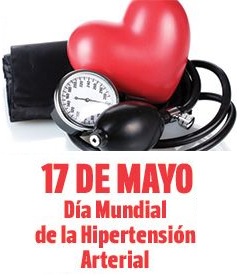
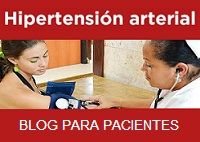


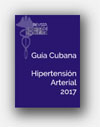
![Glosario: hipertensión [Hipertensión arterial en la atención primaria de salud. 2009]](http://temas.sld.cu/hipertension/files/2016/04/Glosario-e1541006177950.jpg)
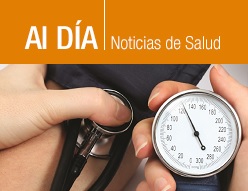
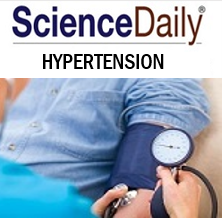

Comentarios recientes